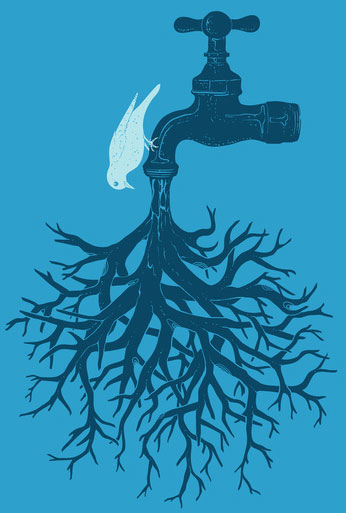-
More than 1 billion people still do not have access to fresh water.♦ SOURCE♺ SHARE

-
If people worldwide switched to energy efficient lightbulbs the world would save US$120 billion annually.♦ SOURCE♺ SHARE
-
AIDS is now the leading cause of death among adolescents in Africa.♦ SOURCE♺ SHARE
-
The global average sea level rose by 19 cm (7.4 in) from 1901 to 2010, as oceans expanded due to warming and melting ice.♦ SOURCE♺ SHARE
-
1 in 5 people in the world still lacks access to modern electricity.♦ SOURCE♺ SHARE
-
1 in 3 people people lack access to basic sanitation services, such as toilets or latrines.♦ SOURCE♺ SHARE
-
Up to 1.5 billion people still do not have access to reliable phone services.♦ SOURCE♺ SHARE
-
The rate of children leaving primary school in conflict affected countries reached 50% in 2011.♦ SOURCE♺ SHARE
-
As of 2008, land degradation affected 1.5 billion people globally.♦ SOURCE♺ SHARE
-
79% of imports from developing countries enter developed countries duty-free.♦ SOURCE♺ SHARE
-
80% of people living in rural areas in developing countries rely on traditional plant-based medicines for basic healthcare.♦ SOURCE♺ SHARE
-
66 millionprimary school age children across the developing world attend classes hungry.♦ SOURCE♺ SHARE
-
One-fifth of the world's final energy consumption in 2013 was from renewables.♦ SOURCE♺ SHARE
-
121 million children of primary and lower-secondary school age were out of school in 2014.♦ SOURCE♺ SHARE
-
828 million people live in slums today and the number keeps rising.♦ SOURCE♺ SHARE
-
Global unemployment increased from 170 million in 2007 to nearly 202 million in 2012.♦ SOURCE♺ SHARE
-
Each year, an estimated one third of all food produced ends up rotting in the bins of consumers and retailers, or spoiling.♦ SOURCE♺ SHARE
-
Energy is the dominant contributor to climate change, accounting for around 60% of total global greenhouse gas emissions.♦ SOURCE♺ SHARE
-
Only half of women in developing regions receive the recommended amount of health care they need for maternity.♦ SOURCE♺ SHARE
-
40% of the world oceans are heavily affected by human activities, including pollution, depleted fisheries, and loss of coastal habitats.♦ SOURCE♺ SHARE



















